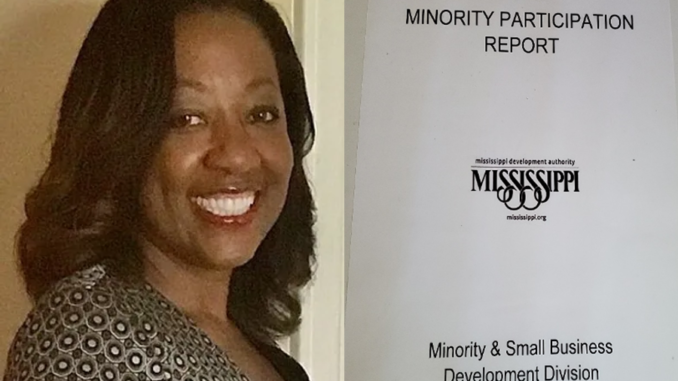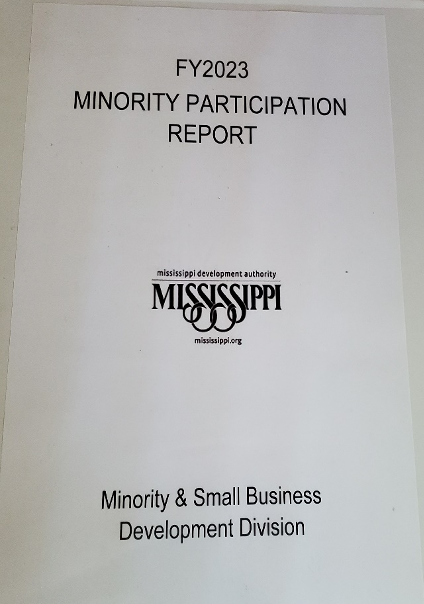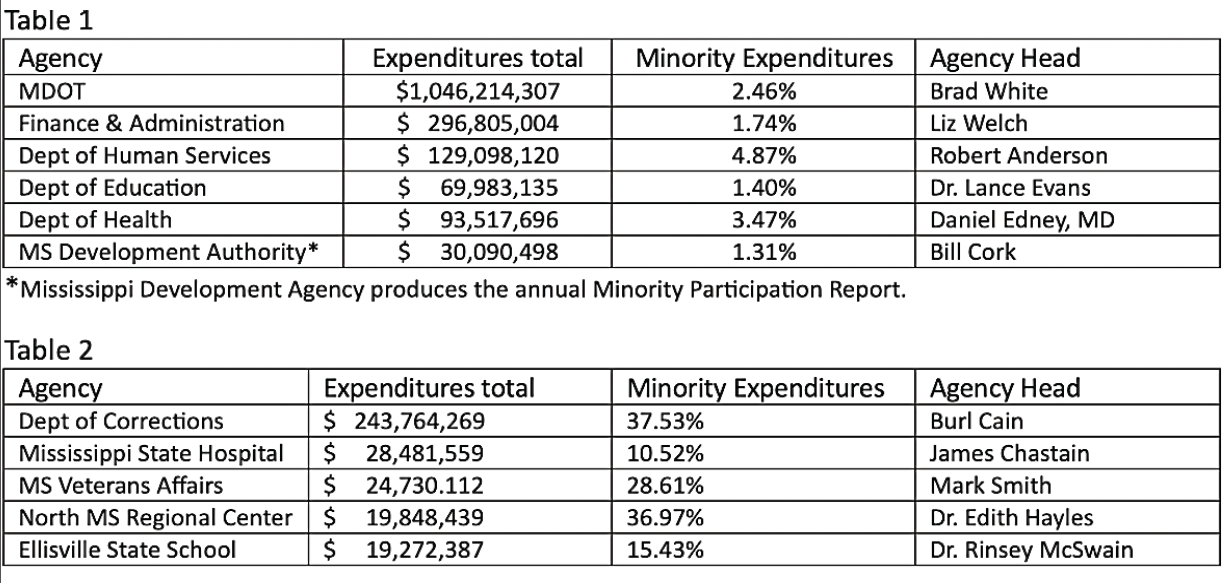
By Christopher Young,
Contributing Writer,

In Part 1 of this article, published by The Mississippi Link in the July 25, 2024 issue, we laid out the obvious and ugly discrimination against minority contractors, and thereby against minorities in Mississippi. We shared data from the FY2023 Minority Participation Report, a report required by statute and published by Mississippi Development Authority (MDA) and their Minority and Small Business Development Division (MSBDD), neither of which has returned calls by this writer to comment on their report.
The report highlights the minority procurement performance of Mississippi’s state agencies and the Institutions for Higher Learning (IHL).
After setting aside the glossy cover material of the 300+ page report, made available to The Mississippi Link newspaper by State Senator John Horhn (D-26), we discover that of the measly 5.73% of funding that goes to minorities, 5.09% of that amount goes to a minority classification called “other non-ethnic women” – white women – leaving just 0.64% of funding to be shared by Asian, Asian Pacific, Black, Hispanic, and Native Americans
This type of discrimination has been the norm in Mississippi for decades, and despite more recently elected leaders like Governor Jonathan Tate Reeves and Lieutenant Governor Delbert Hosemann promising to govern for all Mississippians and to run the state like a business, conditions on the ground for minorities are worse. They preside over and exert their influence over the poorest state in the nation, and a state with a minority population of 43.7% per https://www.census.gov/quickfacts/fact/table/MS/DIS010222. The Census tells us that 58.7% of our population is “white alone,” yet the Minority Participation Report shows that 99.36% of contracting expenditures go to white people – hence earning the label of “state-sponsored discrimination.”

The report shows the expenditures by ninety-two (92) state agency/business areas. Eight have no minority expenditures at all. An additional eleven (11) have minority expenditures less than 1% of their total expenditures. And an additional thirty-one (31) made minority expenditures between 1% and 5%. That makes fifty (50) out of ninety-two (92) – over half awarding between 0.0% and 5.0% of their funding to minorities. Table 1 lists several examples of specific agencies with exceptionally high budgets, yet very low minority expenditures.
Is it a mystery that there are other state entities that do far better? Table 2 lists several examples of agencies with various budget sizes, yet who seem to have prioritized their minority expenditures.
One agency director, who insisted they not be quoted for fear of reprisal, indicated that they simply do not look into the ownership of companies bidding on contracts. They examine the bids and ask themselves if this bid will truly meet the needs for that organization. Of those that can fulfill the needs, the lowest bidder gets selected. This director was very pleased with the minority expenditure percentage from their agency and reiterated that for them it is a colorblind process.
It’s critical to remember that whether the minority expenditures are minuscule or more robust, in FY2023, 88.84% went to “other non-ethnic women,” suffocating actual minority businesses and families. No equity-minded person could see these numbers and not conclude that Mississippi has its knee on the neck of equity for African Americans and other true minorities.

Genie Lacy Jones, president of the Minority Contractors Association of Mississippi, Inc, indicates that in her experience, awarding of contracts generally is not colorblind. When asked about possible solutions and the political climate where conservative Republicans exert firm control over our legislature, she shared, “There is no way, in current political environment. These disparities have existed for the last 22+ years. We need a strategy, same page same story, be tenacious in what we need to say and be consistent. It shouldn’t change based on other variables, like funding sources.” She would know, in 2001, she was appointed as Director of what was then called the Minority Business Enterprise Division of the Mississippi Development Authority. She encourages “fighting complacency, we must be intentional, and we must be consistent over the long haul.”
She went on to discuss how when legislation is offered to remedy these disparities and minority legislators, who often say they have friends on the other side of the aisle, can’t get these people to budge when they’ve been told over many years how important this issue is, that you are left with a lack of respect. She is in favor of a statewide commission on minority contracting, a statewide survey, focus groups, and a disparity study being conducted. Easily one of the state’s most knowledgeable and experienced people on these issues, when asked if she is regularly invited to make presentations to the Legislature, she replied, “Not since COVID.”
Credell Calhoun represented District 68 in the House of Representatives from 1980-1992 and again from 2004-2020. He recalls that early in Haley Barbour’s term a disparity study was agreed to in the House, but never funded. “Sixty-two votes are needed along with a Governor who will sign the legislation in order to bring about change. They don’t want to do right.”
Next week, in Part 3 of this article, we will focus on hearing more from legislators, organization leaders, and business professionals with an eye on meaningful solutions.

Be the first to comment